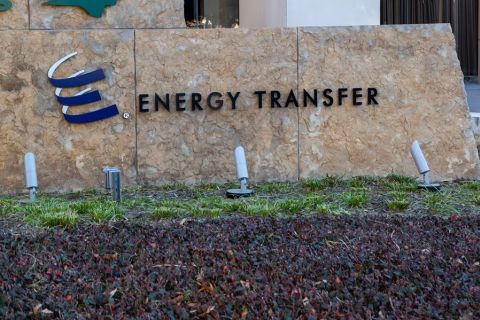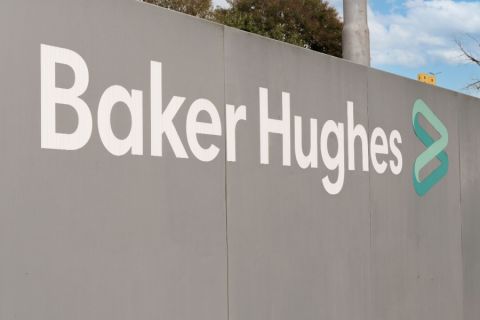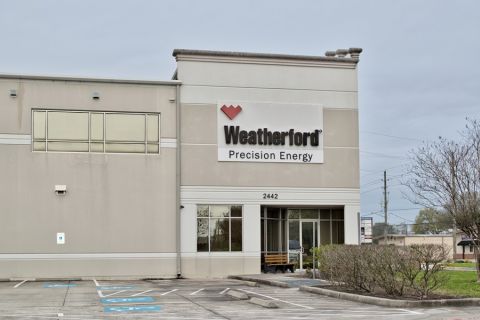AFRICA
Proserv will provide subsea system for BP offshore Angola
Proserv won a multimillion dollar contract in Angola to design and manufacture a subsea sampling system for BP’s Pluto, Saturn, Venus, and Mars field development, Proserv said in a press release. The field is located in 2,000 m (6,562 ft) of water and is believed to be the deepest offshore project in Africa. The system will be able to go to a maximum water depth of 2,500 m (8,202 ft) and interface with two- and four-slot subsea manifolds. The sampling system will interface with the subsea production system to support the monitoring of pressure-volume-temperature properties in the production fluid, according to the press release.
Tanzania will offer offshore blocks in October
The government of the United Republic of Tanzania, through the Tanzania Petroleum Development Corp. (TPDC), will launch the fourth Tanzania Deep Offshore and North Lake Tanganyika Licensing Round Oct. 25, 2013, in Dar es Salaam, Tanzania. The round, which was delayed from September 2012, will include seven deep-water blocks, each covering an average of 3,000 sq km (1,158 sq miles) in water depths between 2,000 m and 3,000 m (6,562 ft and 9,843 ft), according to a TPDC press release. Another two blocks will be reserved for the government. TPDC will be allowed to execute a different exploration approach using a strategic partner to be competitively sourced, the release said. The round will be closed May 15, 2014.
Apache hits hydrocarbon pay in three Egyptian discovery wells
Apache Corp. announced in a press release drilling success with three new discovery wells in Egypt’s Western Desert. The discoveries include the NRQ 3151-1X, located in the Alamein basin within the North Ras Qattara concession, which was flow-tested at a combined rate of 1,625 b/d of oil and 18.7 MMcf/d. Logging operations confirmed 30 m (100 ft) of pay sands were encountered in multiple zones. The second discovery, SIWA L-1X, is located in the Siwa concession within the Faghur basin and tested at a rate of 2,041 b/d of oil. The discovery well encountered 37 m (123 ft) of hydrocarbon pay. The third discovery, NTRK-G-1X, an exploratory well located in the North Tarek concession within the Matruh basin, encountered 18 m (60 ft) of Upper Safa hydrocarbon pay and tested at 14.8 MMcf/d of natural gas and 1,522 b/d of condensate.
ASIA-PACIFIC
Santos turns on tap at Finucane in Australia
Oil production has commenced ahead of schedule and on budget from the US $490 million Fletcher Finucane project in the Carnarvon basin offshore Western Australia, Santos Ltd. said in a press release. The Fletcher Finucane development was sanctioned in January 2012 and consists of a three-well subsea tieback to the existing Santos-operated Mutineer Exeter FPSO facility. It is projected to have an average gross production rate of 15,000 b/d for the first 12 months of production, the company said. The project’s gross proved and probable reserves are estimated at approximately 14 MMbbl. Santos holds a 44% aggregate interest in the Fletcher Finucane project and serves as operator. Other participants are Kufpec and JX Nippon Oil & Gas.
MHI, Mitsui agree to build LNG carrier series
Mitsubishi Heavy Industries (MHI) will sign an agreement with Mitsui OSK Lines to build a Sayaendo series new-generation LNG carrier, according to a press release. Sayaendo series ships feature a structure that integrates the LNG tank cover with the ship hull, which is intended to improve fuel consumption and maintainability. From 2020 the new ship will be used mainly for transportation of LNG produced by the Ichthys LNG project in Australia for Osaka Gas Co. Ltd. and Kyushu Electric Power Co. The new LNG carrier will measure 288 m (945 ft) in length, about 49 m (161 ft) in width, and about 11 m (36 ft) in draft. The 138,000-gross-tonnage ship will be capable of carrying up to 153,000 cu m of LNG in four Moss-type tanks at a service speed of 19.5 knots per hour, according to the press release. The ship will be built at the MHI Nagasaki Shipyard and Machinery Works.
EUROPE
Rosneft, ExxonMobil team up for arctic research center
Rosneft and ExxonMobil signed final agreements establishing a joint arctic research center in Russia and an overarching technology-sharing agreement to support the companies’ joint ventures (JVs) worldwide, according to a press release from ExxonMobil Corp. Formally named the Arctic Research and Design Center for Continental Shelf Development, the facility will provide the Rosneft and ExxonMobil JVs with research, development, and technical services, with near-term focus on the Kara Sea. Initial activities will include work in the areas of safety and environmental protection; ice, metocean, and geotechnical surveys; sea ice management; development of design criteria; and the evaluation and design of development concepts.
Statoil, Total swap interests in Barents Sea
Statoil and Total have reached an agreement on an asset swap in the Barents Sea, Statoil said in a press release. Statoil will acquire 10% equity in Production License (PL) 535 in exchange for 10% equity in PL 395. The two PLs are situated on the Bjarmeland platform in the central Barents Sea, where both companies have proved gas resources including the Ververis discovery in PL 395 in 2008 and the Norvarg discovery in PL 535 in 2011. In PL 535 there also is an ongoing appraisal well, Norvarg II, Statoil said. The agreement is subject to approval by the Norwegian Ministry of Petroleum and Energy, according to the press release.
JKX Ukrainian sidetrack hits oil and gas reserves
JKX Oil & Gas completed a second sidetrack of well M-166X well in the Devonian sandstone reservoir in the Molchanovskoye North field in Ukraine, according to a news release. The initial 12-hour flow rate stabilized at an average of 1,710 b/d of oil with 2.13 MMcf/d gas through a 1 1/ 8 -in choke, with a flowing wellhead pressure of 600 psi. The well was drilled to a total depth of 2,941 m (9,649 ft) and penetrated 207 m (679 ft) of reservoir along its planned horizontal trajectory. M-166X is the first well in the 2013 Ukrainian drilling campaign following a seven-month drilling break, the company said.
MIDDLE EAST
Noble’s Karish prospect offshore Israel strikes gas
Noble Energy Inc. announced in a press release a natural gas discovery at the Karish prospect offshore Israel. The discovery well was drilled to a total depth of 4,811 m (15,783 ft) and encountered 56 m (184 ft) of net natural gas pay in high-quality lower Miocene sands. The Karish well, located in the Alon C license approximately 32 km (20 miles) northeast of the Tamar field, is in 1,737 m (5,700 ft) of water. Discovered gross resources, combined with the derisked resources in an adjacent fault block on the license, are estimated to range between 1.6 Tcf and 2 Tcf with a gross mean of 1.8 Tcf, the company said. Noble Energy is the operator of the Alon C license with a 47.06% interest. Copartners are Avner Oil and Delek Drilling, each with a 26.47% interest.
Oil Search confirms find at Taza 1 sidetrack well in Kurdistan
Oil Search confirmed the presence of oil throughout the Euphrates formation limestones after the Taza 1 sidetrack 2 well encountered oil in the Kurdistan region of Iraq, the company said in a press release. The well reached a depth of 3,351 m (10,994 ft), and wireline logging of the open-hole interval was completed. Preliminary evaluation suggests the oil-bearing Euphrates limestones have good reservoir properties. The forward program is to conduct a further drillstem test over the Euphrates formation. Participants are Oil Search (Iraq) with a 60% interest, Total E&P Kurdistan Region of Iraq (Taza) with a 20% interest, and the Kurdistan regional government with a 20% interest.
NORTH AMERICA
Petrolia estimates 1 Tcf of wet gas in Quebec
A resource evaluation conducted for Petrolia in the Gaspe peninsula in Quebec, Canada, estimated there is more than 1 Tcf of wet gas in place in four prospects. During drilling and testing evaluations at #1-Bourque and #2-Bourque, Petrolia found wet natural gas and traces of light oil. The wet gas discovered was rich in liquid petroleum gases and condensate. Log evaluation indicated a reservoir with vuggy porosity associated with open fracture networks. Test analyses showed a conventional low-permeability carbonate reservoir (tight gas carbonate reservoir). Carbonates of the Forillon formation, which extend over large areas and are located close to major faults such as the North West Arm Fault, constitute a promising exploration play in the peninsula. A production test program is planned to test the Forillon formation and to help delineate the in-place resources and potential recoverable volumes. Petrolia is the operator of the Gaspe Peninsula concession and the Bourque project wells with a 100% interest.
Husky will develop Canada’s South White Rose field
Husky Energy received regulatory approval for a development plan amendment for the South White Rose field, the company said in a press release. The amendment provides for gas injection, which will contribute to EOR and provide additional storage for recovered gas. Husky is targeting approximately 20 MMbbl of oil from South White Rose, and the amendment allows the company to access an additional estimated 6.5 MMbbl of incremental production from the South Avalon Terrace on the southern tip of the main White Rose field. South White Rose is located approximately 350 km (217 miles) offshore Newfoundland and Labrador. Development is under way with gas injection anticipated to begin in 2013 and first oil production planned for 2014. Husky is the operator of the White Rose field.
GULF OF MEXICO
Chevron strikes oil on Walker Ridge Block 98
Chevron Corp. reported an oil discovery at a Lower Tertiary prospect southeast of the Shenandoah find on Walker Ridge Block 98. The #1 OCS G21841 encountered more than 122 m (400 ft) of net oil pay at the Coronado prospect. The well was drilled to 9,713 m (31,866 ft) in 1,868 m (6,130 ft) of water. Well results are still being evaluated, and the company plans additional work to determine the extent of the Lower Tertiary resource in the same mini-basin as the Shenandoah discovery. Chevron operates Coronado with a 40% working interest with ConocoPhillips (35%), Anadarko Petroleum (15%), and Venari Offshore (10%).
Statoil, Exxon move forward with development of Julia field
Statoil and operator ExxonMobil have decided to sanction the Julia field development in the Gulf of Mexico (GoM), Statoil said in a press release. The announcement confirms the agreement between operator Exxon-Mobil and Statoil to proceed with field development, estimated to take approximately three years. The partners each own a 50% interest in the field. Julia will be a subsea tieback to the Jack and St. Malo floating production platform, located approximately 24 km (15 miles) away, which is operated by Chevron USA Inc. Statoil also is a co-owner in the Jack and St. Malo developments, sanctioned in 2010. Drilling operations are planned to start in 2014, and production startup is planned for 2016, Statoil said. The lifetime of the Julia field is estimated to be up to 40 years, with an initial production rate of up to 34,000 b/d of oil.
SOUTH AMERICA
Parnaiba basin well tests for gas
OGX Petroleo e Gas Participacoes reported results from a flow test of exploration well #107-OGX drilled onshore Brazil’s Parnaiba basin in Block PN-T-49. The well was tested in a 66-m (217-ft) Devonian gas interval in the Fazenda Chicote accumulation. During the 36-hour test, the well flowed 24.2 MMcf/d of gas when tested on a ?-in. choke with an absolute open-flow rate of 113 MMcf/d. According to the company, the reservoir produces dry gas and is comparable to the reservoirs in the nearby Gaviao Real and Gaviao Branco fields. The test confirms the potential of the Parnaiba basin, where Gaviao Real is about to begin production and Gaviao Branco has been declared commercial. OGX is the operator of Block PN-T-49 with a 70% interest in partnership with Petra Energia, which holds the remaining 30% interest.
Chevron, YPF team up to develop shale oil
YPF and Chevron have agreed to work together to develop unconventional oil in Argentina, YPF said in a press release. Chevron is expected to invest US $1.5 billion in a pilot program targeting oil development in the Vaca Muerta formation in the province of Neuqu?n. However, full development of the first cluster will require an investment of more than $15 billion, according to the press release. More than 100 wells will be added to the existing 50 production wells in the next 12 months. Signing of the final agreement by YPF CEO Miguel Galuccio and Ali Moshiri, president of Chevron’s Latin America and Africa operations, came after five months of talks.
Recommended Reading
Talos Energy Expands Leadership Team After $1.29B QuarterNorth Deal
2024-04-25 - Talos Energy President and CEO Tim Duncan said the company has expanded its leadership team as the company integrates its QuarterNorth Energy acquisition.
Energy Transfer Ups Quarterly Cash Distribution
2024-04-25 - Energy Transfer will increase its dividend by about 3%.
ProPetro Ups Share Repurchases by $100MM
2024-04-25 - ProPetro Holding Corp. is increasing its share repurchase program to a total of $200 million of common shares.
Baker Hughes Hikes Quarterly Dividend
2024-04-25 - Baker Hughes Co. increased its quarterly dividend by 11% year-over-year.
Weatherford M&A Efforts Focused on Integration, Not Scale
2024-04-25 - Services company Weatherford International executives are focused on making deals that, regardless of size or scale, can be integrated into the business, President and CEO Girish Saligram said.





